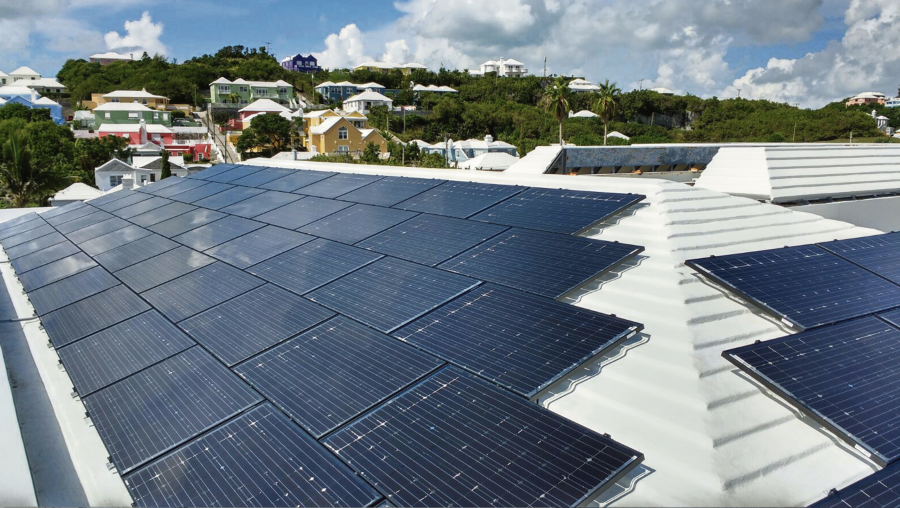Potential for hundreds of new jobs
by Jonathan Kent
The future is green for electricity in Bermuda and that means strong growth ahead for the renewable energy sector.
If there is an industry on the island that could reliably be expected to expand through these challenging times, it is green energy.
Indeed, it is probably the only industry for which growth is mandated. The Integrated Resource Plan, the blueprint for the future of the island’s electricity supply, targets 85 per cent of the island’s power supply coming from renewable sources by 2035.
Realising that vision would entail hundreds of millions of dollars of investment and hun- dreds of jobs. A report by the Rocky Mountain Institute, published this year, concludes that 750 jobs could be created over five years by pursuing 50 megawatts of solar photovoltaic capacity, or 300 jobs over five years by install- ing 30 megawatts of wind power.
Stuart Kriendler, managing director of Be Solar, a stalwart of the renewable energy in- dustry, said the industry is already generating jobs for locals. “We are training and recruiting more Bermudians in this industry, so while
some organisations have been trying to cut back, we’ve been looking to hire more people. About 60 per cent of our staff are Bermudian and the other 40 per cent spouses of Bermu- dians, so our business does not hold any work permits.”
The approval of the takeover of Ascendant Group Ltd by Canadian firm Algonquin Power and Utilities Corp promises to put wind in the sails of the green energy industry. Algonquin has pledged to invest $300 million in renewables on the island and to work with local companies.
Walter Roban, the home affairs minister, said training programmes for solar installers were being set up at Bermuda College and that a Green Energy and Environmental Justice Fund was planned to encourage more renewables investment.
Mr Kriendler said there were other good economic reasons to go green. “We’re just coming up to our tenth anniversary and we can say that we’ve helped our clients save more than $3.5 million. This is money that otherwise would have been sent off island to pay for fossil fuels.
“An investment in renewable energy keeps more dollars within our Bermudian economy. We’ve seen growing interest over the past six months, with people wanting to invest in clean, renewable energy.
“With people working from home and they see what their Belco bills are like, they seize opportunities to reduce that monthly cash outflow by making this sort of investment.”
The photovoltaic technology in solar panels has evolved over the years and is cheaper and more efficient than it was a decade ago, making return on investment more compelling.
Stratton Hatfield, of Be Solar, said: “De- pending on the property, you’re looking at a seven to eight-year average payback. Once a system pays for itself, you’re looking at 23 years of free electricity. Because solar has no moving parts, that means at the end of its lifespan, it will not stop working – you can get energy beyond that period.”
Mr Hatfield saw a clear path to growth ahead. He said: “Right now we’re under 2 per cent of the island being powered by solar. We’ve a long way to go to achieve the targets set in the IRP.”
Electric vehicles form another part of the picture. Increasing adoption could bring further benefits in terms of cutting pollution and reducing fossil fuel imports still further. Ac- cording to David Gumbs, of the Rocky Mountain Institute, charging up would cost electric car drivers between a fifth and a quarter of what they pay for gas, based on Bermuda’s electricity rates, he said.
Mr Gumbs said: “If you then transition to renewables at a lower power rate, you then get even more savings. You’re talking about another 60 per cent reduction. You’ll feel like you’re driving around for free at that point in time.”

